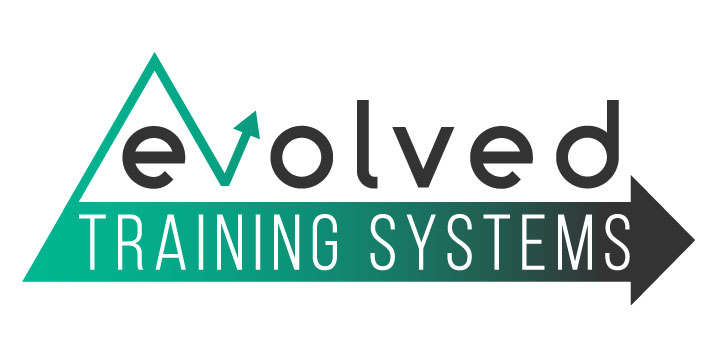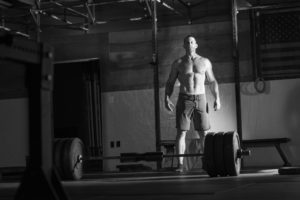As the Powerbuilding cycle comes to a close, there should be increased strength, as well as a general sense of confidence with the heavier weight in the lower rep ranges. The Powerbuilding cycle had the lowest target reps for “repeating” movements of any Evolved cycle thus far.
The Powerbuilding cycle also did a lot of training on the opposite side of the spectrum with high-rep sets; often working upwards of 15-20 Reps on smaller movements. The programming purposely spent less time in the middle range of 6-15 reps. The reason was to avoid crossing of signals that are sent for the low rep work with that of the high rep endurance work.
The new “Reverse Pyramid” cycle will work mostly through that middle rep range. With increased strength and power, combined with the ability to do “more work” from training the higher reps, the body is primed to take advantage of some serious hypertrophy in these middle rep ranges.
In a Reverse Pyramid, the idea is to begin with the heaviest set, and then decrease weight each set thereafter. This is in direct contrast to the “Pyramid” style where someone might perform sets of 12-10-8-6 reps or 15-12-9 reps, and weights increase set to set.
I am actually a huge fan of the standard pyramid for accessory exercises. However, it is extremely impractical when used to train the primary movements.
Here’s the problem….
By the time you get to the heavy weight, you are so fatigued that you can’t lift even close to what you could fresh. This is a massive issue for fast-twitch muscle fiber recruitment.
When starting with the lightest sets, the body will recruit mostly the slow-twitch muscle fibers. These are the ones that turn on when all your explosiveness is gone. They are “enduring” and are associated with long efforts of training; aerobic in nature. They don’t grow, nor do they get super strong. They just help you train for a long time.
By starting with the heavy set when you are fresh, you are able to create significantly more power on each and the fast-twitch muscle fibers will contract super hard to get the job done.
However, you would never *START* with the heaviest weight without performing low-effort preparatory sets first. These sets are called “Ramp-up” sets and they are vital to maximizing output of the top set. There is a specific way in which you should implement them so that you stimulate the Central Nervous System without causing fatigue that will sacrifice performance. See #5 below for details.
Other Things to Know About This Cycle
1. There are 6 days of “required” programming with an additional “optional conditioning day.” You can place this optional day wherever you like, though I would suggest to avoid doing it the day prior to a lower body workout as this may induce fatigue that impacts performance.
The intention is to complete this “microcycle” in 10 calendar days.
You can stick to the same “training days” across 4-5 sessions per week if needed.
For Example, if you like to train on M/T/Th/F/S and rest on Wed and Sun, then just keep doing that every week.
2. The cycle is split into Push/Legs/Pull/Push/Legs/Pull over the course of the 6 training days.
This movement orientation structure keeps “like patterns of movement” together which accomplishes two main objectives:
a) Ensures recovery before training similar movement patterns again
b) Allows a bit of extra volume (stimulus) per target area, enhancing hypertrophy focus
2. Each set in the “Reverse Pyramid” will progress in its own rep range.
For Example:
1 x 5-8 (increase weight next week when you hit 7-8 Reps)
1 x 8-12 (increase weight next week when you hit 11-12 Reps)
1 x 12-18 (increase weight next week when you hit 16-18 Reps)
3. The first set is really the one driving the progression. If you are able to improve on the top set in some way, but still remain the same on the following two sets, that is progress (the top set created more fatigue than it did the prior week which then impacted subsequent sets).
4. The final set of the sequence (highest reps) is meant to be almost entirely a “mind-muscle connection” focus set. The weight really doesn’t need to be high, or even challenge you close to failure. You just need to make sure that every rep is performed deliberately with the purpose of connecting to the target muscle and make it stretch/contract through the range-of-motion. This set should not create anxiety/stress over whether rep performance improves, as much as that it is engaging and productive muscularly.
5. Here is how to properly RAMP-UP weight to the TOP SET:
Remember that the purpose is to keep fatigue low, but stimulate a CNS response
In this example, let’s assume the top set of 5-8 Reps is with 200 lbs.
50 lbs x 10-12 Reps (super easy, no real effort, just moving through ROM)
100 lbs x 6-8 Reps (begin focusing on movement execution)
140 lbs x 3-4 Reps (focus required, bracing and explosiveness)
170 lbs x 1-2 Reps (feel something heavy, mentally prepare, avoiding fatigue)
200 lbs x 5-8 Reps WORK SET
Then decrease weights as needed for target rep ranges that follow in subsequent work sets
This is one of my favorite ways to train; in regards to the Reverse Pyramid structure as well as the Push/Legs/Pull orientation of the split. I want you guys to all get the most out of this cycle! As always, I’m glad to discuss further and answer any questions in the Members Facebook Group.
—————




